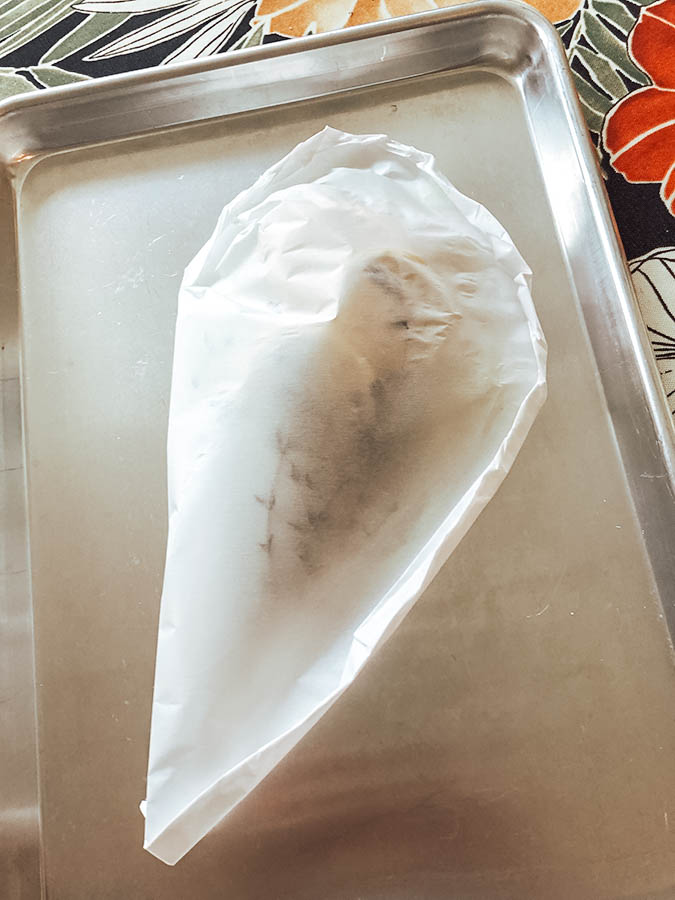Article and photos by Pam Vukelic
As I write this, we are just past Mardi Gras (Fat Tuesday) and Ash Wednesday. There is much talk about what folks are “giving up” for Lent. This form of sacrifice often involves omitting favorite foods such as sweets, salty snacks, fast food, and pizza. It brings to mind something my teacher, Nancy, has frequently told me when I told her I’ve made a mistake. She says there are no mistakes, just opportunities to do something differently, so perhaps the sacrifice of Lent is an opportunity to make some permanent dietary changes.
As we eliminate or reduce fats, sugars, and salt, what opportunities are at our disposal? I have a few ideas. One of the easiest ways to add flavor without adding calories is to use spices and herbs. I’m a big proponent of growing fresh herbs, even if only a few. Chives are an easy perennial to keep going in your yard — there are garlic chives and regular chives. Italian parsley is versatile and different from curly leaf parsley, the latter being used for a garnish and the former as an ingredient. Basil, thyme, and mint are logical second tier choices.
Spices rarely contribute any meaningful calories but are a great substitute for things that do such as sauces and butter. Spices help define the culture of food. For example, Hungarian chicken dishes might be loaded with paprika, cardamom is common in Norwegian dishes, five spice powder is used in Chinese foods, and curry powder flavors many Indian foods. Spice blends might contain significant amounts of salt, so be sure to check those labels. Turmeric, the current darling, is showing up in all kinds of dishes. Spices also make great additions to crumbs for breading. One could add taco seasoning to finely crushed tortilla chips for a Mexican style chicken.
When asked at a restaurant how hot I want my curry, on a scale of 1 to 5, I’ll choose 1, and find that my dish is still plenty hot. I blame it on my Norwegian taste buds. My father used to claim there is enough heat in ketchup to cause his forehead to perspire, and he was serious. He was more accustomed to potatoes, white fish, cream, and bread than to peppers and spices with heat. Hot sauces are another no calorie or low calorie flavor contributor to your foods. Some studies suggest that hot sauces amp up metabolism and so they burn more calories than they contribute. Ketchup, incidentally, contains quite a bit of sugar.
Citrus fruit juices, such as lemon, orange, and lime, quickly add flavor to your food. Squeezing some juice over your meat, fish, or vegetable is a great flavor enhancer. Combine with a fine olive oil for a quick, light salad dressing.
In keeping with the Lenten theme, here is a suggestion for a delightful way to prepare fish. The technique is referred to as en papillote, which means wrapped in a parcel. I prefer to use parchment paper, but foil or even a kraft paper grocery bag can be used. The method is usually reserved for fish but would work for any fairly quick-cooking protein, such as a thin chicken breast. Choose ingredients to add to the protein that will give off moisture as you cook, creating steam in the packet. Bring the puffed packet to the table when done so everyone can enjoy the delicious aroma that escapes once the packet is opened. Other advantages to cooking en papillote are that clean-up is a breeze. Just throw it all away. And there are no lingering fish or frying odors.
Alaskan Cod en Papillote
- 1/3 cup shredded cabbage
- 2-inch leek, thinly sliced
- Fillet of fish (firm white fish or salmon)
- 3 thin slices of lemon
- 2 sprigs of thyme
- Salt and pepper
Preheat oven to 450 degrees F. Cut a piece of parchment paper in the shape of a large heart, with a crease down the middle. On the right-hand side of the heart, layer the cabbage and leeks under the fish fillet. Top the fillet with lemon, thyme, salt, and pepper. Fold left-hand side over the right. Begin at the point and fold the edges together, going all the way to the top. Repeat so the fold is secure. Place the packet on a baking sheet and bake for about 10 minutes, until the paper is browned and the package is puffed up.
While your oven is hot, roast some vegetables until caramelized. Broccoli, cauliflower, brussels sprouts, carrots, sweet potatoes, squash, and potatoes are all good choices. Toss in a bit of oil, salt, and pepper before roasting. The process brings out the natural sweetness of the vegetables.
Pam says, “Talk to strangers. You might meet Kenny G, learn Chinese exercises for the elderly, or discover chickens love to eat cabbage.”


